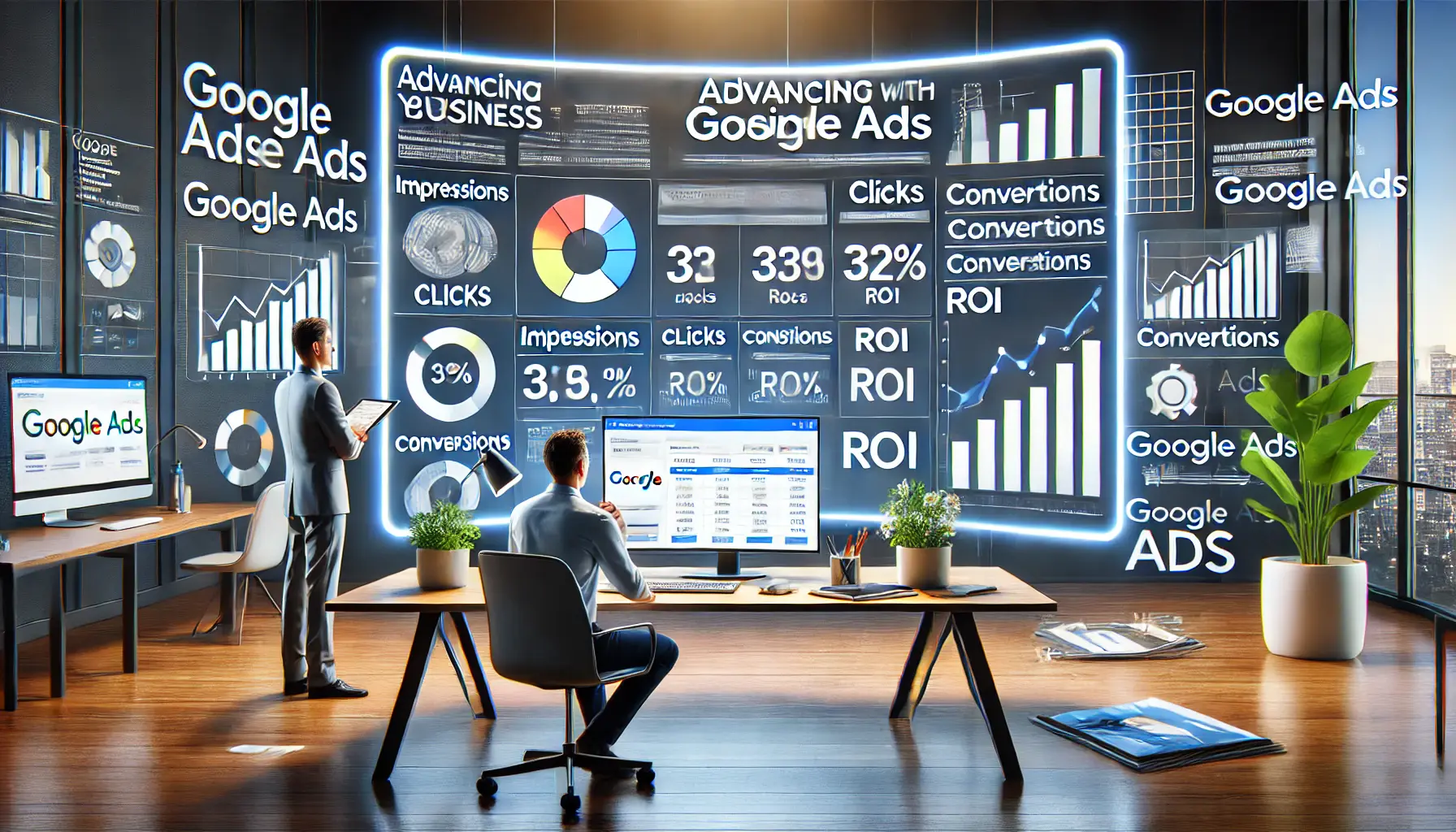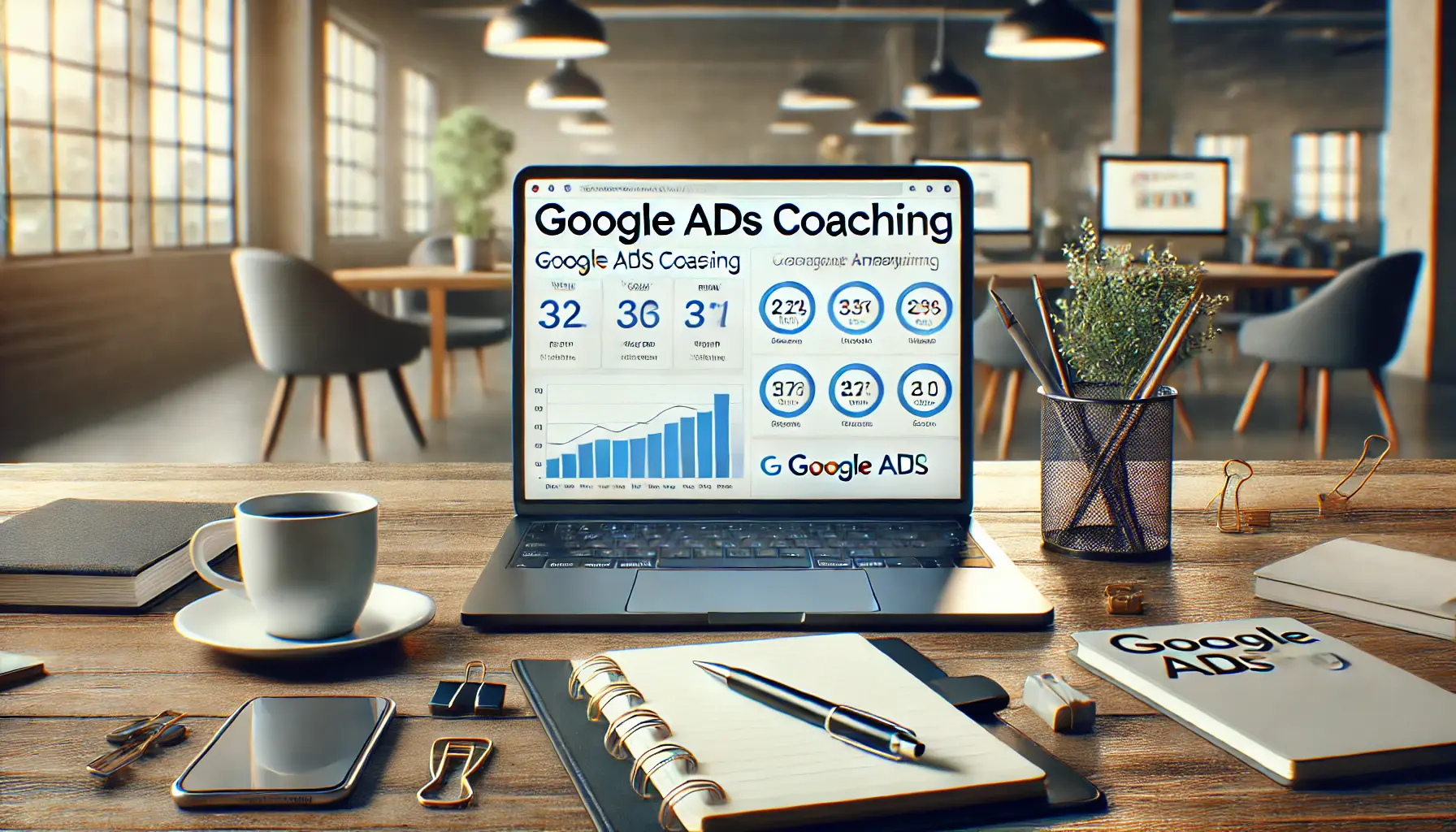Google Ads has revolutionized the way every business connects with its audience; it is now a core component of modern digital marketing strategies.
Be it a startup or an established business, leveraging Google Ads will drive remarkable growth toward the achievement of your objectives.
But to truly harness the full power of Google Ads, one needs to understand its core principles—what it is and how it works.
This article aims to guide you through actionable strategies and insights to advance your goals with Google Ads effectively.
- Understanding Google Ads: Key Concepts for Beginners
- Crafting Effective Campaigns: Tips and Strategies
- Optimizing Campaigns: Maximizing Results
- Expanding Reach: Advanced Features and Strategies
- Measuring Success: Tracking and Analytics
- Advancing Goals with Google Ads: A Comprehensive Summary
- Frequently Asked Questions About Advancing Goals with Google Ads
Understanding Google Ads: Key Concepts for Beginners
Getting into the world of Google Ads can be intimidating, but learning several of its key concepts lays the ground for success.
Google Ads uses a pay-per-clickAn online advertising model where advertisers pay each time a user clicks on their ad. model in which businesses bid on ad placements on search results, websites, and video content.
With the right approach, Google Ads can be incredibly powerful in driving traffic, improving visibility, and generating leads.

A representation of the Google Ads system with key elements like keywords, targeting, and analytics.
What is Google Ads and How Does It Work?
The Google Ads online advertising tool enables businesses to create and publish ads on the major search engine’s results pages, as well as all connected websites.
Advertisers bid on specific keywords, and their ads are shown based on relevance and bidding competition.
This ensures that ads reach people who are most interested and increases the likelihood of higher engagement.
- Pay-per-click model: Pay only for clicks on your ad.
- Keyword targeting: Show your ads on valuable search terms related to your business.
- Customizable campaigns: Create campaigns tailored to the specific needs of your business.

A visual representation of the critical role of targeting in Google Ads.
Why Targeting in Google Ads Is So Critical
Targeting is at the core of Google Ads success.
By focusing on the right audience, businesses can ensure their ads are seen by potential customers who are most likely to convert.
Google Ads offers a range of targeting options, including:
- Geographic targeting: Show ads to users in specific locations.
- Demographic targeting: Focus on users based on age, gender, and other demographics.
- Device targeting: Optimize ads for mobile, desktop, or tablet users.
- Interest-based targeting: Reach users based on their online behavior and preferences.
Effective targeting ensures that your ad budget is well-utilized, giving you maximum value for money spent in terms of return on investment.

A detailed visualization of key metrics critical for tracking digital campaign success.
Key Metrics to Track in Your Campaigns
To measure the success of your Google Ads campaigns, it’s crucial to monitor the right metrics.
These metrics provide valuable insights into campaign performance and help refine your strategies.
- Click-Through Rate (CTR): The percentage of users who click on your ad after seeing it.
- Conversion Rate: The percentage of users who complete a desired action, such as making a purchase or signing up.
- Quality Score: Google’s rating of the relevance and quality of your ads and landing pages.
- Cost-Per-Click (CPC): The amount you pay each time someone clicks on your ad.
By focusing on these metrics, you can make data-driven decisions to optimize your campaigns for better outcomes.

A visual representation of strategic budgeting for success in Google Ads campaigns.
Budgeting Essentials to Succeed in Google Ads
Budgeting effectively is essential to getting the most out of your Google Ads campaigns.
Start by defining a daily budget based on your overall marketing goals and available resources.
Use Google’s tools to estimate keyword costs and expected results, ensuring your investments align with your objectives.
- Set realistic budgets: Begin with conservative amounts and scale up based on performance.
- Automated bidding: Let Google adjust bids to maximize conversions within your budget.
- Monitor spending: Keep a close watch on your ad spend to ensure you stay within your budget.
Proper budgeting will allow you to sustain long-term campaigns while achieving meaningful results.
Understanding the pay-per-click model and keyword targeting is crucial to leverage Google Ads effectively. Begin with small campaigns to familiarize yourself with its mechanics.

A depiction of creating effective campaigns with strategic planning and digital tools.
Crafting Effective Campaigns: Tips and Strategies
Building a Google Ads campaign is more than just budgeting and keywords.
It means creating a step-by-step strategy that will support your business objectives while also ensuring that the ads are eye-catching and highly targeted.
In this section, you will learn some of the key steps involved in the design and delivery of successful Google Ads campaigns.

A visualization of defining clear goals for effective Google Ads campaigns.
How to Define Clear Goals for Your Google Ads Campaigns
Just like any other campaign, you must define the goals even before starting.
What does your business want to achieve: an increase in website traffic, more sales, or improvement in brand awareness?
Clearly set objectives will help mold your campaign into one that yields measurable results.
- Identify Key Performance Indicators (KPIs): Choose metrics such as CTR, conversions, or ROI based on your goals.
- Focus on SMART goals: Ensure objectives are Specific, Measurable, Achievable, Relevant, and Time-bound.
- Align with business priorities: Your campaign goals should align with your wider marketing and business strategies.

A depiction of selecting the right Google Ads campaign type for business needs.
Choosing the Right Campaign Type for Your Business
Google Ads offers various campaign types to address different marketing objectives.
Selecting the right one can significantly improve the performance of your campaign.
The most common options include:
- Search campaigns: Best for driving traffic from users actively searching for your products or services.
- Display campaigns: Ideal for creating brand awareness by showcasing your ads on Google’s partner sites.
- Shopping campaigns: Perfect for e-commerce businesses to promote their products.
- Video campaigns: Engage users through compelling video content with YouTube ads.
- Performance Max campaigns: Leverage Google’s AI to optimize ads across all channels.

A visual representation of creating high-quality ad copy and compelling visuals.
Creating Compelling Ad Copy and Visuals
Your ad copy and visuals are what capture your audience’s attention and drive engagement.
Investing time in crafting appealing and relevant content is critical.
- Focus on benefits: Highlight how your product or service solves customer problems.
- Include a strong call-to-action (CTA): Use phrases like “Buy Now” or “Learn More” to encourage immediate action.
- Test multiple ad variants: Experiment with headlines, descriptions, and visuals to determine what works best.
- Use high-quality images or videos: Visual appeal can significantly boost ad performance.

A visual representation of leveraging ad extensions to enhance ad performance.
How to Leverage Ad Extensions to Maximize Performance
Ad extensions add more information to your ads, making them more attractive and informative.
They can improve your ad’s visibility and click-through rate (CTRClick-Through Rate, a metric showing the percentage of users who click on an ad after seeing it.).
Examples of ad extensions include:
- Sitelink extensions: Direct users to specific pages on your website.
- Call extensions: Add a phone number to enable direct contact.
- Location extensions: Display your business address to attract local customers.
- Price extensions: Showcase pricing details for your products or services.
By combining clear goals, the right campaign type, compelling ad content, and effective use of ad extensions, you can create campaigns that resonate with your audience and drive measurable results.
Define SMART goals and align them with your business priorities to create campaigns that deliver measurable results.

A visual representation of optimizing digital campaigns for maximum results.
Optimizing Campaigns: Maximizing Results
Launching a Google Ads campaign is only the beginning of your journey to achieve business success.
To truly make an impact, optimizing your campaigns is essential.
Optimization ensures you are not only reaching your target audience but also making the most of your advertising budget.
In this section, we’ll explore strategies to maximize your campaign results through continuous improvements.

A visual representation of the role of keywords in the success of digital advertising campaigns.
Understanding the Role of Keywords in Campaign Success
Keywords are the centerpiece of any Google Ads campaign.
Choosing the right ones can make a huge difference in ad performance.
The focus should be on finding keywords that align with user intent and maintain a balance in search volume and competition.
- Use keyword research tools: Tools like Google Keyword Planner and SEMrush can help identify high-performing keywords.
- Target long-tail keywords: These more specific phrases often lead to higher conversion rates.
- Monitor keyword performance: Regularly review which keywords are driving results and refine your list accordingly.
- Negative keywords: Exclude irrelevant terms to prevent your ads from showing to the wrong audience.

A visual representation of optimizing campaigns to improve quality score in digital advertising.
Tips for Improving Your Quality Score
Google assigns a Quality ScoreGoogle's measure of the relevance and quality of an ad and its landing page. to your ads based on their relevance, landing pageThe webpage users are directed to after clicking on an ad. experience, and expected CTR.
A higher Quality Score not only improves ad placement but also lowers your cost-per-click (CPCCost-Per-Click, the amount an advertiser pays for each click on their ad.).
- Create highly relevant ads: Ensure your ad copy closely matches the keywords you’re targeting.
- Optimize your landing page: Provide a seamless user experience with fast loading times, clear messaging, and easy navigation.
- Focus on ad relevance: Regularly update your ads to keep them fresh and aligned with current trends.

A visual representation of A/B testing in digital campaigns for continuous improvement.
Utilizing A/B Testing for Continuous Improvement
A/B testing allows you to experiment with different ad variations to identify what resonates most with your audience.
This iterative process is key to achieving better results over time.
- Test one element at a time: Change variables like headlines, descriptions, or CTAs individually to determine their impact.
- Run tests for a sufficient duration: Collect enough data to make statistically significant decisions.
- Use insights to refine campaigns: Apply the findings from successful tests to improve overall campaign performance.

A visual representation of using data analysis to optimize digital campaign performance.
Analyzing Data to Optimize Performance
Data analysis is the backbone of any campaign optimization.
By observing performance metrics and identifying patterns, you can adjust your strategies for better results.
- Monitor key metrics: Track CTR, conversion rate, CPC, and ROI to gauge campaign effectiveness.
- Leverage Google Ads reports: Use these insights to understand which ads, keywords, or audiences are driving the best outcomes.
- Identify areas for improvement: Look for underperforming aspects of your campaign and adjust them accordingly.
By implementing these optimization techniques, you can ensure consistent, measurable success with your Google Ads campaigns.
Optimization is a continuous process, and regular refinement will keep your campaigns ahead of the competition.
Regularly refining keywords, enhancing ad quality, and analyzing data ensures sustained campaign success and improved ROIReturn on Investment, a measure of the profitability of an advertising campaign..

A visual representation of expanding reach through advanced digital marketing features and strategies.
Expanding Reach: Advanced Features and Strategies
Once your Google Ads campaigns are optimized for performance, the next step is to expand your reach.
Leveraging advanced features and strategies can help you tap into new audiences, maximize ad efficiency, and drive even greater results.
This section will explore innovative ways to broaden your campaign’s impact.

A visual representation of exploring and utilizing Google Ads remarketing options to re-engage previous users.
Exploring Google Ads Remarketing Options
Remarketing enables you to reconnect with past users by targeting them through Google Ads.
This feature helps boost conversions and reinforces brand awareness.
Common types of remarketing strategies include:
- Standard remarketing: Show ads to people who have visited your website or used your mobile app while browsing websites and apps in the Google Display Network.
- Dynamic remarketing: Show personalized ads to users featuring the products or services they viewed on your site.
- Remarketing lists for search ads (RLSA): Customize search ad campaigns for previous visitors searching on Google.
- Video remarketing: Re-engage users who have interacted with your YouTube videos or channel.
Effective remarketing keeps your brand top-of-mind and encourages users to complete their purchase journey.

A visual representation of utilizing audience targeting to enhance campaign effectiveness in digital marketing.
Harnessing the Power of Audience Targeting
Google Ads offers powerful audience targeting options to help refine your reach and connect with users most likely to engage with your brand.
By applying these features, you can ensure that the right ad is shown to the right person at the right time.
- Affinity audiences: Target users based on their interests, hobbies, and lifestyle.
- In-market audiences: Focus on users actively researching products or services similar to yours.
- Custom audiences: Build your own segments based on keywords, URLs, or apps your target audience interacts with.
- Lookalike audiences: Expand your reach by targeting audiences similar to your existing customers.
By leveraging audience insights, you can deliver highly relevant ads to your targeted customers.

A visual representation of integrating Google Ads with other marketing tools for a holistic approach.
Google Ads Integrated with Other Marketing Tools
Amplify your campaigns by integrating Google Ads with other marketing platforms and tools.
A multi-channel approach creates a cohesive experience for your customers and drives better outcomes.
- Google Analytics: Gain deeper insights into user behavior and enhance ad performance measurement.
- CRM tools: Synchronize customer data to create personalized ads.
- Email marketing platforms: Retarget users and nurture leads through email campaigns.
- Social media platforms: Extend your reach by running complementary campaigns on platforms like Facebook and Instagram.
Integrations allow you to align your marketing efforts and achieve a greater return on investment.

A visual representation of scaling digital campaigns using automation and AI for optimized growth.
Scaling Campaigns with Automation and AI
From scaling to effective campaign execution, Google Ads offers a range of automation and AI tools.
These tools save time, optimize ad performance, and free you up to focus on strategy.
- Smart Bidding: Machine learning adjusts your bids in real-time to maximize conversions.
- Responsive search ads: Automatically test multiple headlines and descriptions to show the best-performing combinations.
- Performance Max campaigns: Run fully automated campaigns across all Google platforms with minimal manual input.
- Ad scripts: Automate repetitive tasks and optimize campaign management.
By embracing automation, you can simplify your advertising process and achieve scalable growth.
Advanced features and strategies that help you expand your reach ensure your Google Ads campaigns stay competitive and continue to drive impact in an ever-evolving digital landscape.
Utilize advanced tools like remarketing and audience targeting to expand your campaign’s reach and drive greater results.
A visual representation of measuring success through tracking and analytics in digital marketing campaigns.
Measuring Success: Tracking and Analytics
Measuring the success of your Google Ads campaigns is a critical step in optimizing performance and ensuring a strong return on investment (ROI).
By effectively utilizing tracking and analytics tools, you can gain valuable insights into what’s working and what needs improvement.
This section will guide you through the essential strategies for evaluating your campaign’s effectiveness.
A visual representation of the process of setting up Google Ads conversion tracking.
Setting Up Google Ads Conversion Tracking
Conversion tracking is a key feature that enables you to track the actions users take as a result of engaging with your ad, whether that be purchasing, signing up, or downloading.
Here’s how you set it up:
- Define your conversions: Determine what action you consider to be a valuable outcome for your business, such as sales, lead generation, or app installs.
- Install the tracking tag: Add the Google Ads conversion tracking tag to your website or app.
- Link Google Analytics: Integrate Google Analytics with your Google Ads account to streamline tracking and analysis.
Accurate conversionThe completion of a desired action by a user, such as a purchase or sign-up. tracking ensures you can evaluate your campaign’s ROI effectively and make informed adjustments.

A visual representation of analyzing performance reports and insights in digital marketing.
Understanding Performance Reports and Insights
Google Ads provides complete reporting tools to analyze the performance of your campaign.
These reports include insights on key metrics and trends, helping you optimize your strategies.
- Monitor key metrics: Track data such as CTR, CPC, and conversion rate.
- Analyze audience behavior: Understand how different segments react to your ads.
- Identify trends: Spot performance patterns over time to refine your campaigns.
Using these insights, you can focus your efforts on the most effective strategies and eliminate underperforming elements.

A visual representation of using Google Analytics to gain deeper insights into digital marketing performance.
Using Google Analytics for Deeper Insights
Google Analytics is a powerful tool for gaining deeper insights into user behavior and campaign performance.
When integrated with Google Ads, it provides a comprehensive view of your marketing efforts.
- Track user journeys: Understand how users interact with your website after clicking your ads.
- Quantify multi-channel performance: Analyze how Google Ads fits into your overall marketing strategy.
- Optimize landing pages: Use data to drive improvements in the user experience and increase conversions.
Combining Google Ads data with insights from Google Analytics provides a more holistic understanding of your campaign’s effectiveness.

A visual representation of assessing ROI to optimize digital marketing campaigns.
Assessing ROI to Refine Campaigns
Ultimately, the success of your Google Ads campaigns depends on their return on investment.
Regular evaluation ensures that your campaigns remain profitable and aligned with your business goals.
- Calculate ROI: Compare the revenue generated from your campaigns to the costs incurred.
- Identify cost-effective strategies: Focus on the ads and keywords that yield the best results.
- Plan for scalability: Leverage data-driven insights to scale up successful campaigns while keeping costs in check.
By systematically tracking your campaigns and analyzing them, you can refine strategies to achieve sustainable success with Google Ads.
Tracking conversions and using analytics tools like Google Analytics provides actionable insights for campaign improvement.

A visual representation of advancing business goals with a comprehensive Google Ads campaign summary.
Advancing Goals with Google Ads: A Comprehensive Summary
Google Ads has proven to be a transformative tool in the digital marketing landscape, offering businesses the ability to reach their audience with precision and efficiency.
This article explored various strategies and insights to help businesses advance their goals with Google Ads.
By focusing on key areas such as campaign optimization, audience targeting, and performance tracking, you can unlock the full potential of this platform.

A visual representation of reviewing key takeaways and insights from each section of a digital marketing campaign.
Key Takeaways from Each Section
- Understanding Google Ads: Grasp core concepts, target effectively using keywords, and leverage flexible budget types to kick-start any campaign successfully.
- Building Effective Campaigns: Clear goals, appropriate campaign types, and compelling content are essential ingredients for meaningful results.
- Optimizing Campaigns: Continuous improvements through keyword refinement, Quality Score enhancement, and A/B testing can significantly boost campaign performance.
- Expanding Reach: Advanced features such as remarketing, audience targeting, and AI-driven automation enable businesses to scale efforts effectively and reach new customers.
- Measuring Success: Tracking and analyzing campaign metrics with tools like Google Analytics and conversion tracking ensure ROI optimization and long-term growth.

A visual representation of integrating various digital marketing strategies for maximum impact.
Integrating Strategies for Maximum Impact
For continued success with Google Ads, it’s vital to incorporate the discussed strategies into a cohesive marketing plan.
Start by aligning campaign goals with broader business objectives for consistency and focus.
Utilize advanced tools such as automation and multi-channel integrations to gain a competitive advantage.
Regular monitoring and evaluation of campaign performance are equally important.
By understanding audience behavior, analyzing key metrics, and refining strategies, you can create campaigns that deliver measurable results.

A visual representation of final analysis and reflection on advancing business goals through digital marketing strategies.
Final Thoughts on Advancing Your Goals
Google Ads offers unparalleled opportunities for businesses to reach their audience and achieve their marketing objectives.
Whether you are a small business aiming to build brand awareness or an established enterprise seeking to increase conversions, the insights shared in this article provide a roadmap for success.
Mastering the basics, leveraging advanced features, and continually refining your approach will enable you to harness the full power of Google Ads.
By embracing these best practices, your business goals will not only be met but exceeded, ensuring success in the ever-evolving digital landscape.

A visual representation of addressing frequently asked questions about Google Ads and advancing business goals.
Your campaigns can be managed by an agency specialized in Google Ads, check out our service page.
Frequently Asked Questions About Advancing Goals with Google Ads
Here are some of the most frequently asked questions about using Google Ads effectively to achieve business objectives.
These FAQs provide concise and practical answers to enhance your knowledge of the platform and its strategies.
Google Ads helps businesses reach their target audience, increase visibility, and achieve marketing goals through paid advertising on Google’s search results and partner networks.
Keyword targeting allows ads to appear for specific search terms, ensuring relevance.
Businesses select keywords their audience is likely to search for, driving better engagement and conversions.
Remarketing helps reconnect with past website visitors, encouraging them to complete desired actions.
It boosts brand awareness and conversion rates by targeting users who already showed interest.
Optimize campaigns by refining keywords, enhancing Quality Score, conducting A/B tests, and leveraging audience insights to improve performance and maximize return on investment.
Conversion tracking measures actions users take after interacting with ads, providing insights into campaign effectiveness and helping optimize strategies for better results.
Google Ads offers various campaign types, including Search, Display, Shopping, Video, and Performance Max campaigns, each tailored to specific marketing objectives.
Integrating Google Analytics with Google Ads provides deeper insights into user behavior, enabling better tracking, analysis, and optimization of campaigns for improved outcomes.
Best practices include using affinity and in-market audiences, creating custom audience segments, and leveraging lookalike audiences to connect with users most likely to engage.
Smart Bidding uses machine learning to optimize bids in real-time, ensuring maximum conversions and improved ad efficiency without constant manual adjustments.













